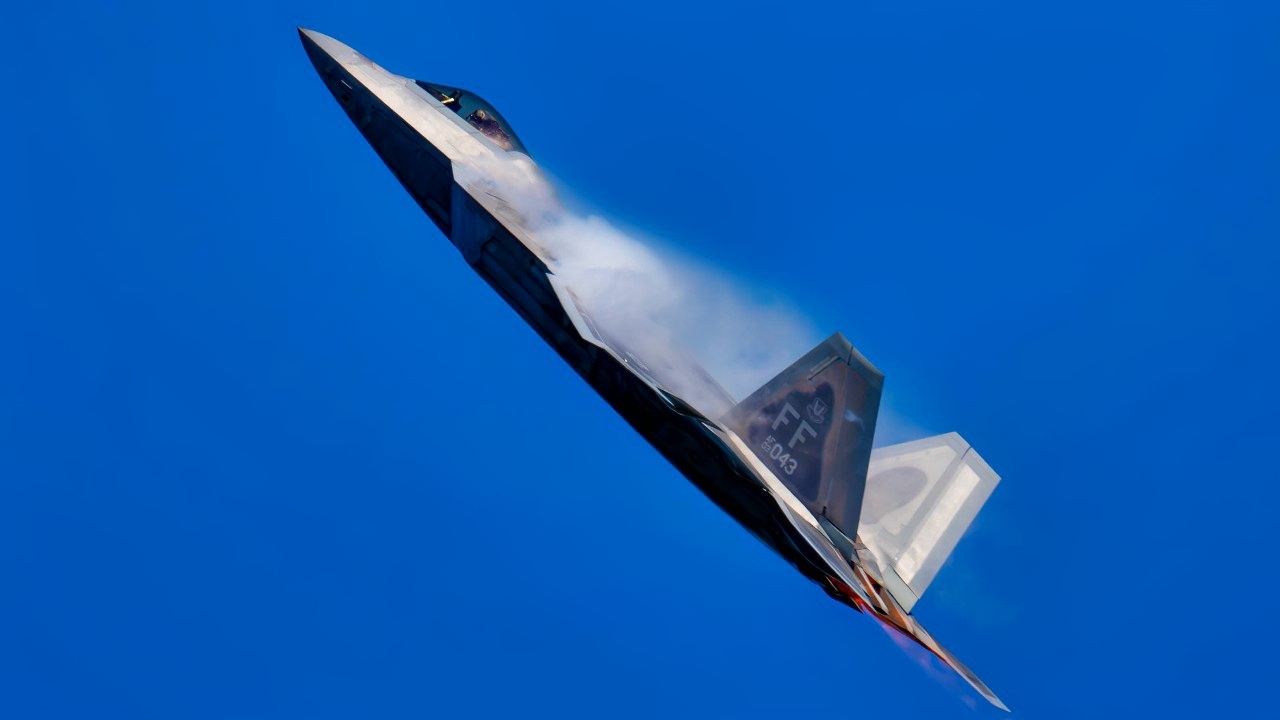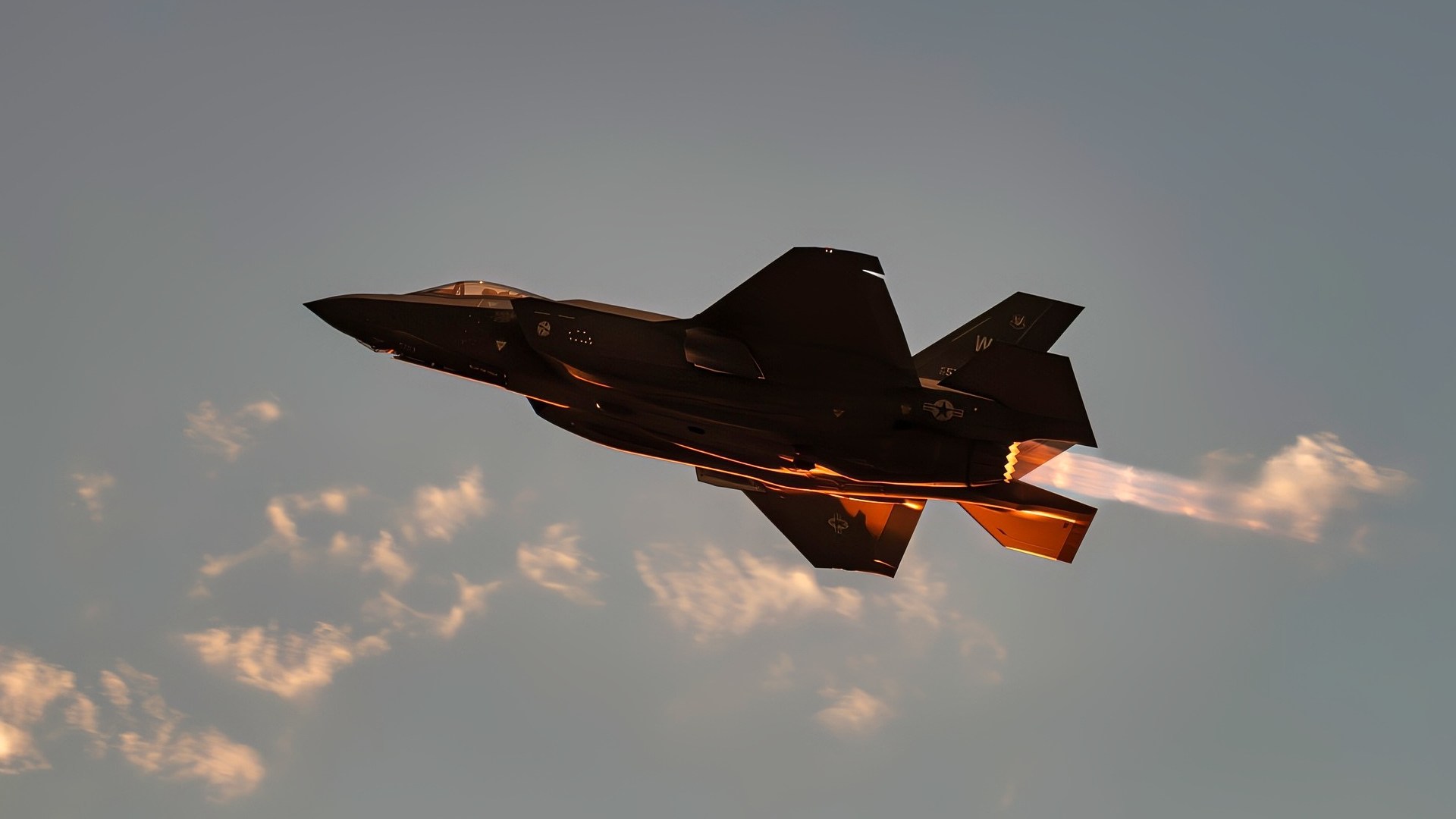Key Points and Summary – As F-47 NGAD and F/A-XX arrive, the F-22 shouldn’t fade—it should evolve. The argument: a “Super” Raptor bridges today’s gap while 6th-gen fleets scale, countering a rapidly expanding PLAAF.
-The Raptor’s core—high thrust-to-weight, Mach-2-plus dash, stealth—pairs with software-led upgrades: AIM-260 integration, advanced EW, two-way F-22/F-35 links, and AI-driven sensing to “quarterback” CCAs.

USAF Capt. Nick “Laz” Le Tourneau, F-22 Raptor Aerial Demonstration Team pilot and commander, performs a practice demonstration at Joint-Base Langley-Eustis, 17 March, 2025. Laz is the only F-22 Raptor pilot in the world certified to fly the demonstration. (U.S. Air Force photo by Staff Sgt. Michael Bowman)
-Future increments could add directed-energy and hypersonic options, reinforcing first-shot, first-kill doctrine and Rapid Raptor deployments.
-With 5th- and 6th-gen mass years away, accelerating an F-22 Super keeps U.S. air dominance credible through the 2050s while NGAD matures.
The F-22 Super Raptor Is a Must for the U.S. Air Force
As the F-47 and F/A-XX explode onto the operational scene as 6th-generation breakthrough platforms, some might be inclined to think the famous F-22 could begin to sunset its illustrious existence and soar into retirement.
It likely comes as no surprise to many that, in fact, the opposite is true. There are many reasons why the F-22 should not only be sustained and modernized, but accelerated into a “F-22” Super variant, as called for by President Trump.
Aside from the pure “capability”-related reasons why the Pentagon should sustain the F-22 as long as possible, there are also clear production-related threat dynamics.
It may take several years for the F-47 and F/A-XX to exist in F-35-like numbers in the hundreds of planes, yet there could easily be a shorter-term need to “mass” 5th and 6th-generation airpower in the event of a great power conflict.
Addressing Threats
The People’s Liberation Army Air Force (PLAAF), for instance, is already known to operate roughly 300 J-20 5th-generation stealth jets and is fast-tracking the J-35 and two new, as yet unidentified, 6th-generation aircraft.
The PRC is well known for its civil-military fusion and ability to accelerate platform production at scale rapidly.
Therefore, retiring the F-22 is not only a dangerous idea in terms of lost capability but would also put the US Air Force at a potential 5th-gen airpower “deficit” compared to the PLAAF.

China J-20 Fighters. Image Credit: Weibo.
F-22 to 2060
The Air Force and Pentagon have demonstrated an intent to sustain and fly the F-22 well into the 2050s and 2060s, in part because it remains highly upgradeable. Today’s F-22 is an almost entirely different aircraft from the one that first took flight nearly 30 years ago, as it has received new avionics, sensors, software, coating materials, and weapons.
Its Mach 2.25 speed and superior thrust-to-weight ratio enable the aircraft to vector and maneuver in flight, which contributes to its ability to prevail in air-to-air engagements and achieve overall air superiority.
Some argue the F-22 remains the most superior air dominance platform the world has ever seen, suggesting it would prevail against high-speed Russian Su-27s and Su-57s and potentially outmatch the Chinese 5th-generation J-20 Dragon.
F-22 Super
President Trump called for a next-generation F-22 “Super” during a state visit to Qatar earlier this year, comments that reflect the high level of confidence his administration and Pentagon officials have in the aircraft.
There is significant precedence for this, as the F-22’s weapons capabilities received enhancements across the entire fleet years ago through a software upgrade known as 3.2b; this improved the weapons interfaces and fire control for the aircraft, significantly enhancing the range and accuracy of the AIM-120D and AIM-9X air-to-air and air-to-ground weapons.
Additional new weapons are planned for the F-22. Software and computing upgrades could increasingly enable the Raptor to integrate new generations of air-fired weapons. The emerging high-speed, long-range, precise air-fired AIM-260, for instance, is planned for the F-22.
Upgrades are significant as they could potentially enable the fighter to destroy targets with great precision from stand-off ranges and fire munitions capable of adjusting course in flight as needed. Upgrades and next-generation air-to-air weapons will be integrated into the F-22, enhancing the aircraft’s capabilities and enabling it to operate effectively in a contested electromagnetic warfare environment.
An F-22 Super would not only fire laser weapons as such weapons become available for fighter-jet integration, but it would also be armed with hypersonic weapons. The Air Force intends to arm the F-22 with the fast-arriving MAKO air-launched hypersonic missile.
While there continue to be significant advances in the realm of stealth and external configurations of fighter aircraft, such as those seen with the F-47, many of the most impactful fighter jet enhancements can reside in the areas of computing, software, electronics, and sensing.
An aircraft can become an almost entirely different platform without having to change its hardware to a large degree, due to rapid advances in AI-enabled computing, sensing, and electronics.
An F-22 Super would clearly benefit from new generations of sensing and transport-layer communications technology. The Raptor has been described by pilots as an “aerial quarterback,” meaning it can connect intelligence data and targeting information with 4th-generation fighters and other aircraft.
In recent years, the US Air Force has made significant progress in enabling secure two-way connectivity between the F-22 and F-35, an achievement that has a substantial combat-multiplying effect.

A U.S. Air Force F-35A Lightning II takes off for a mission during U.S. Air Force Weapons School Integration (WSINT) at Nellis Air Force Base, Nevada, June 4, 2025. WSINT is a graduate-level training event that combines multi-domain assets in large-force scenarios, enabling U.S. Air Force and joint service members to hone tactical expertise and integrate advanced capabilities in a dynamic threat environment. (U.S. Air Force photo by William R. Lewis)
New generations of the F-22 Super would likely build upon this and further streamline, organize, and accelerate the sharing of time-sensitive data. AI-enabled sensors, for example, could gather, manage, and analyze critical combat information from otherwise disaggregated or separated systems.
With networking enhancements, an F-22 could be engineered to fly in tandem with the emerging F-47, with both aircraft able to share data in-flight seamlessly.
All of these improvements would undoubtedly reinforce the fundamental concept of operation that informs the F-22, referred to as “first-shot, first-kill.”
The intent with the F-22 is to ensure the aircraft can use stealth, speed, and agility to deliver high-intensity lethal “strikes” upon enemy targets at the beginning of a military conflict.
Years ago, the Air Force pioneered a critical “Rapid Raptor” program designed to deploy an F-22 anywhere in the world within 24 hours.
The effort involved specific forward-stationing of F-22s and small maintenance crews in key strategically vital locations across the globe.
The Rapid Raptor program supports the fundamental concept of operation woven into the core idea of the F-22, something which an F-22 Super would build upon.
About the Author: Kris Osborn
Kris Osborn is the President of Warrior Maven – Center for Military Modernization. Osborn previously served at the Pentagon as a highly qualified expert in the Office of the Assistant Secretary of the Army—Acquisition, Logistics & Technology. Osborn has also worked as an anchor and on-air military specialist at national TV networks. He has appeared as a guest military expert on Fox News, MSNBC, The Military Channel, and The History Channel.
More Military
Russia’s Mach 2 Su-30SM Fighter Has A Message for Any Air Force on Earth
The Mach 2.2 B-1A Bomber Has A Message for the U.S. Air Force
The Mach 2.35 ‘Super’ Eurofighter Typhoon Fighter Has a Message for Any Air Force On Earth
Canada’s CF-18 Hornet Fighter Crisis
Forget NGAD or the J-20: A 7th Generation Fighter Could Hit Mach 5











Pingback: Reviving Air Superiority: Why the U.S. Air Force Must Prioritize a ‘Super’ F-22 Raptor Upgrade Now